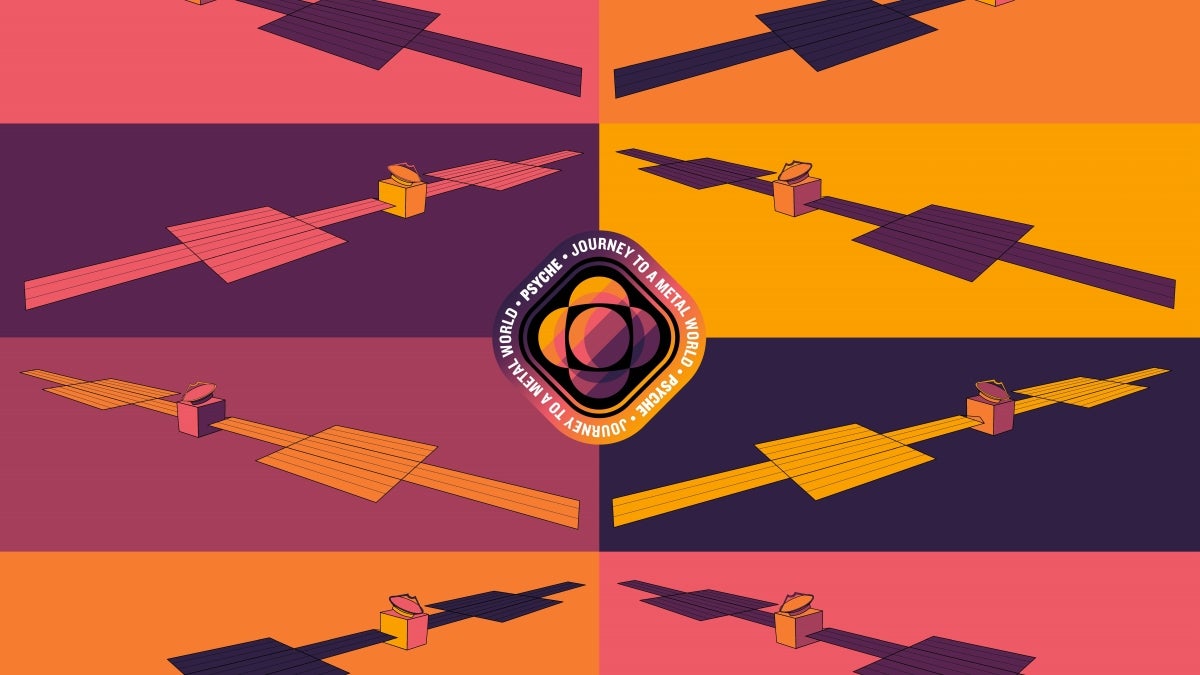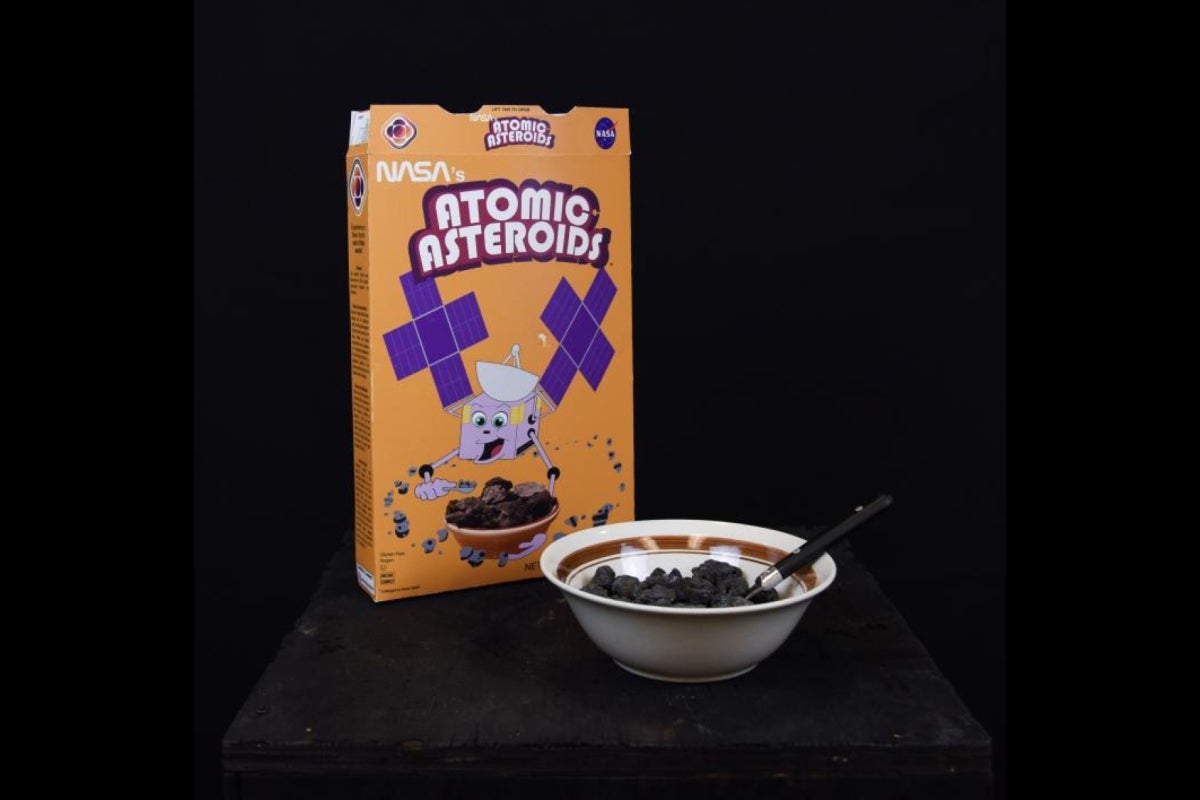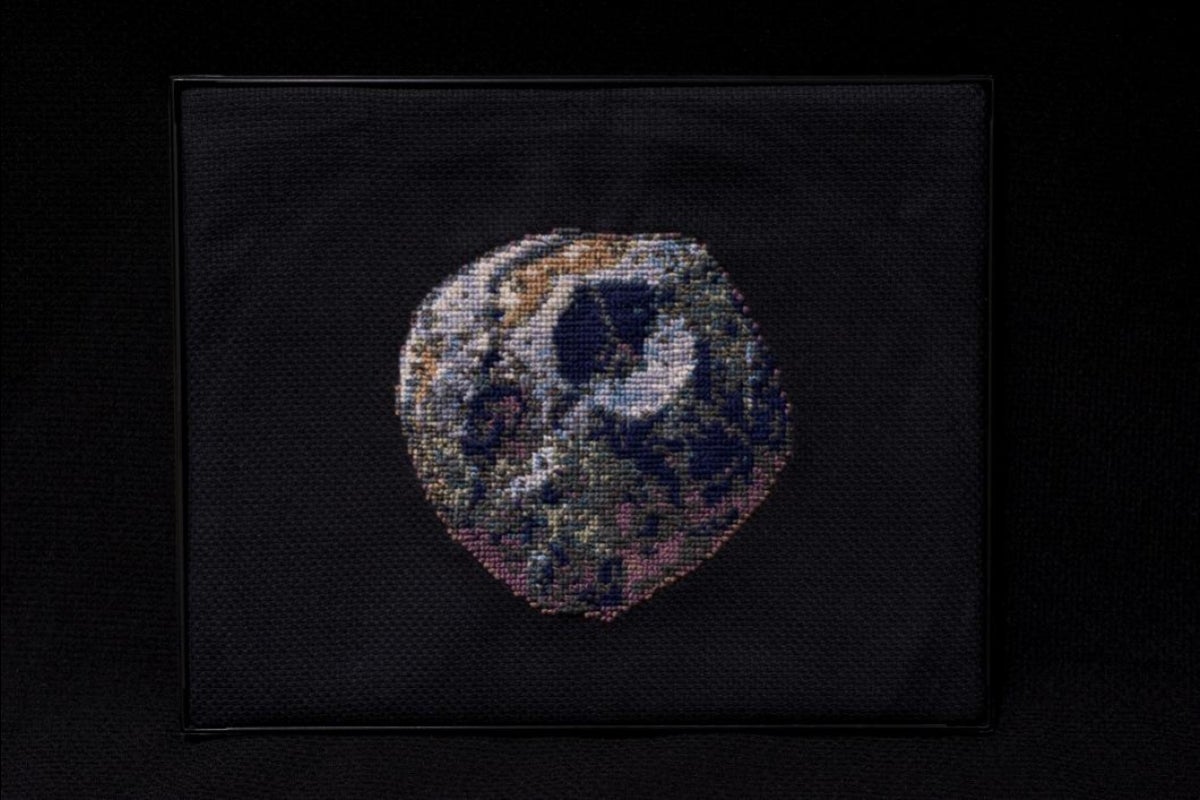NASA Psyche space mission seeking undergraduates to help inspire the public

"Psyche Pop" - An eight panel Andy Warhol/pop art-inspired drawing of Psyche in orbit created by 2017-18 Psyche Inspired intern Morgan Baerwaldt.
Beginning this month, the Arizona State University-led NASA Psyche Mission is expanding its innovative “Psyche Inspired” arts program to the national stage, inviting undergraduate students from universities and community colleges throughout the U.S. and its territories to apply to become one of the space mission’s featured creatives, or “Psyche Inspired Interns,” for the 2018-19 academic year.
The goal of Psyche Inspired is to share the excitement, innovation and scientific and engineering content of NASA’s Psyche Mission through artistic and creative works. Students who were selected for the 2017-18 program created artistic and creative pieces including original compositions for piano, sculptures, painting, 3D models, photography, acrylic art, needlepoint, stop-motion films and mixed media — all inspired by the NASA Psyche Mission.
The Psyche Inspired program is open to all majors, from the arts to engineering and beyond. Previous Psyche Inspired interns have majored in astrobiology, biogeosciences, ceramics, computer science, digital culture, drawing, electrical engineering, engineering management, English, geology, graphic design, materials science, music, painting and sculpture.
Students in the program also have the freedom to collaborate and explore different genres and media, as long as it adheres to scientific accuracy. Throughout the internship, students learn about the Psyche mission by talking to mission scientists and staff. Interns also meet in person or virtually to talk about their projects, ask questions, receive feedback and collaborate.
Caralie Cedarleaf, a 2017-18 Psyche Inspired intern and ASU senior majoring in sculpture, said of her participation in the program, “I've noticed a change in how I relate to projects that are bigger than just one person. Before, I was hesitant to get involved in things, fearful that I didn't have enough to offer. Now, I engage with new opportunities with my assets and skills in mind, not worried about what I'm lacking. I've become bold.”
Each Psyche Inspired intern selected for the 2018-19 program is expected to create at least one original creative work every two months, for a total of four works throughout the school year. In the spring, these works will be curated into a show on the ASU Tempe campus and online, as well as incorporated into a coffee-table book.
The deadline for applications is Aug. 31 at 5 p.m. PST.
MORE: Psyche Inspired application
Up to 16 interns will be selected for the 2018-19 academic year: up to 10 interns from institutions nationwide and up to six from ASU. If selected for the program, students will be supplied with a stipend of $250 to purchase materials, such as art supplies, computer software and crafting materials needed to create their works. Selections for the 2018-19 academic year will be announced on Sept. 14.
Selection criteria includes the quality and originality of sample work submitted, as well as responses to interview questions and references. The selection panel will also look to include the best and widest range of creative genres and presentation styles.
“Psyche Inspired is unique because it really is for everyone,” says the program’s student manager, Brooke Owen. “It has challenged students from different backgrounds and majors to create original works that explain complex topics. Then, those original works become great outreach tools that allow the public to understand, and feel more connected to, the Psyche mission and space exploration as a whole.”
The Psyche Mission
Psyche, an asteroid orbiting the sun between Mars and Jupiter, is made almost entirely of nickel-iron metal. As such, it offers a unique look into the violent collisions that created Earth and the terrestrial planets.
The Psyche spacecraft is targeted to launch in August 2022 and travel to the asteroid using solar-electric (low-thrust) propulsion, arriving in 2026, following a Mars flyby and gravity-assist in 2023. After arrival, the mission plan calls for 21 months orbiting the asteroid, mapping it and studying its properties.
The scientific goals of the Psyche mission are to understand the building blocks of planet formation and explore firsthand a wholly new and unexplored type of world. The mission team seeks to determine whether Psyche is the core of an early planet, how old it is, whether it formed in similar ways to the Earth's core, and what its surface is like.
The spacecraft's instrument payload will include a magnetometer, a multispectral imager, and a gamma ray and neutron spectrometer. The mission will use an X-band radio telecommunications system and will test a sophisticated new laser communications technology, called Deep Space Optical Communications (DSOC) that encodes data in photons.
The Psyche Mission is in NASA's Planetary Science Division’s Discovery Program. The Psyche Mission’s principal investigator, Lindy Elkins-Tanton, is the director of the School of Earth and Space Exploration. In addition to Elkins-Tanton, ASU researchers on the Psyche mission team include Jim Bell (deputy principal investigator and co-investigator), David Williams (co-investigator) and Catherine Bowman (student collaborations lead).
The mission is led by Arizona State University. NASA’s Jet Propulsion Laboratory is responsible for mission’s overall management, system engineering, integration and test, and mission operations. The spacecraft’s solar-electric propulsion chassis will be built by SSL.
More Science and technology

Indigenous geneticists build unprecedented research community at ASU
When Krystal Tsosie (Diné) was an undergraduate at Arizona State University, there were no Indigenous faculty she could look to…

Pioneering professor of cultural evolution pens essays for leading academic journals
When Robert Boyd wrote his 1985 book “Culture and the Evolutionary Process,” cultural evolution was not considered a true…

Lucy's lasting legacy: Donald Johanson reflects on the discovery of a lifetime
Fifty years ago, in the dusty hills of Hadar, Ethiopia, a young paleoanthropologist, Donald Johanson, discovered what would…






